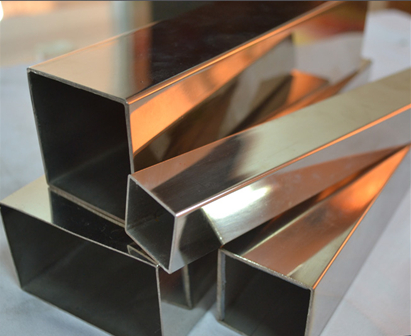

SUS309S |

SUS309S stainless steel and 310/310S austenitic stainless steel are often used in high temperature environments. Its high chromium content and nickel content ensure good corrosion resistance and oxidation resistance, and its strength is higher at room temperature than austenitic 304 alloy. application High alloy stainless steels generally exhibit good high temperature strength, creep resistance and environmental corrosion resistance. Therefore, they are widely used in furnace parts of the heat treatment industry, such as: conveyor belts, rollers, burners, refractory pads, pipe hangers, etc. These grades are also used in the chemical processing industry to carry hot concentrated acids, ammonia and disulfides. In the food processing industry, these grades are used in contact with hot acetic acid and citric acid. Anti-aqueous corrosion 309/309S and 310/310S are mainly used in high temperature environments and can effectively utilize their oxidation resistance. However, these alloys have a certain degree of corrosion resistance to aqueous solutions because of their high chromium content and high nickel content. The high nickel content makes these alloys slightly more resistant to chloride stress cracking corrosion than 304 stainless steel. However, the 309/309S and 310/310S austenitic stainless steels are still susceptible to this corrosion. In applications where corrosion resistance to aqueous solutions is required, 310/310S is often used, such as in concentrated nitric acid solutions, where grain boundary preferential corrosion may occur. Processing characteristics 309/309S, 310/310S stainless steel is widely used in the heat treatment/processing industry due to its high temperature resistance and oxidation resistance. Because of this, these alloys are often processed into complex structures. The processability of carbon steel is generally considered to be the standard in metal forming operations. The properties exhibited by austenitic stainless steel are quite different from those of carbon steel: austenitic stainless steel is more difficult to machine and hardens very fast. Although this does not change the processing methods we generally use, such as cutting, machining, forming, etc., these characteristics affect the specific details of these processing methods. Folding welding The austenitic grade is considered to be the easiest grade of soldering in stainless steel. They can be soldered by all common methods. The same is true for 309/309S, 310/310S. If you need to fill the solder, it is generally necessary to match the components. Because of the increased alloy content of this grade, the fluidity of the molten pool can be reduced. If the fluidity of the bath still needs to be reduced, a silicon-containing solder (such as ER309Si, ER309LSi) can be used. 309/309S, 310/310S has a higher coefficient of thermal expansion and lower thermal conductivity. A small amount of ferrite is formed in the solidified weld metal, which may cause hot cracking. This problem is in the anti-de-soldering, and the wide soldering joint may be more serious. Low alloy content solders (such as ER308) can increase ferrite in surfacing and reduce the tendency for hot cracking. After the components of the base metal are diluted, the corrosion resistance and heat resistance at the metal joint may be lowered. Folding heat treatment / annealing It is inevitable that sus309S stainless steel will produce scale during air annealing. The scale is rich in chromium and has a certain adhesion. Generally, the annealed scale is removed prior to further processing. There are two ways to remove scale: mechanical and chemical methods. The combination of surface blasting and chemical rust removal is often the most effective way to remove all stubborn scales. Silica sand, glass beads are good sandblasting materials. Iron particles, steel particles can also be used, but this may cause free iron to enter the surface of the metal, causing the surface to rust or discolor. Since 309/309S, 310/310S exhibits an austenitic structure at room temperature, it cannot be hardened by heat treatment. Higher mechanical strength can be achieved by hot or cold work, but these grades usually do not reach this state. Better cold tensile strength and yield strength can also be obtained by cold work. These properties are unstable at high temperatures if not anneal after cold work, and these alloys are often used for high temperature operations. If the cold-worked material is used in a high-temperature environment, it is just the opposite, which will affect the creep properties of the material. Last product:904L super austenitic stainless steel Next product:316L stainless steel |